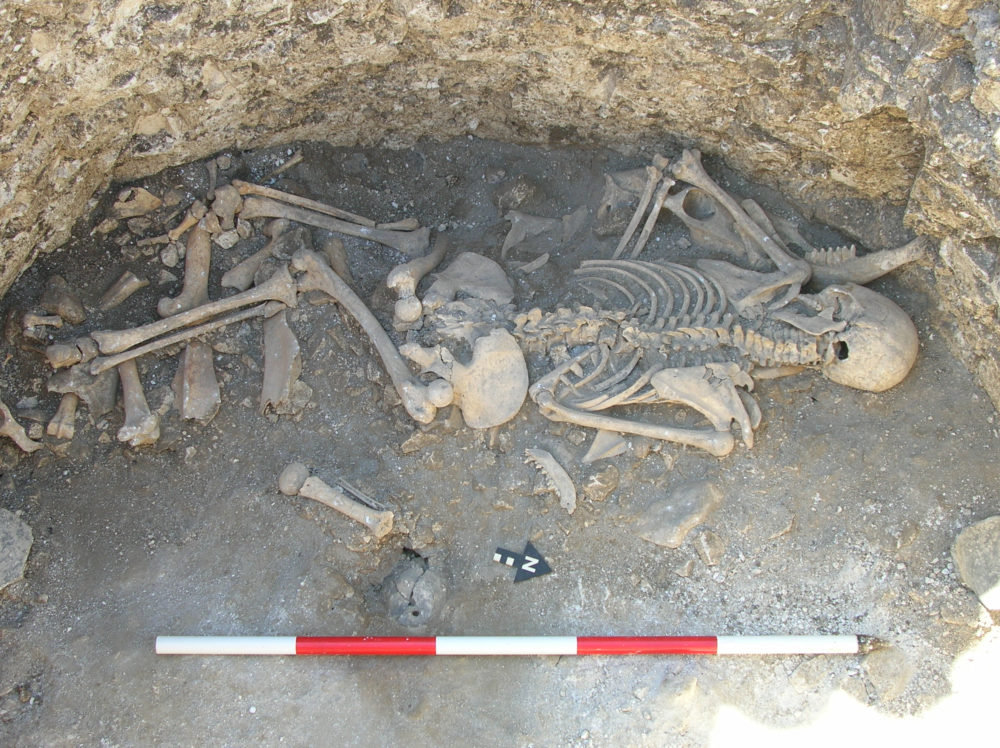Archaeologists find evidence of human sacrifice in Britain 2,000 years ago

Archaeologists have uncovered the remains of a young woman in Dorset who they believe was murdered as a human sacrifice during the Iron Age.
The team from Bournemouth University have been examining the remains of the woman, aged in her 20s, who was killed by a stab wound to the neck as well as damage to a rib, possibly inflicted through violence.
The remains were found during excavations of a pre-historic settlement dating back 2,000 years at Winterborne Kingston in central Dorset.
A university spokesman said: “Their analysis suggests she was in her late 20s when she died and had lived a physically demanding and hardworking life.
“They also found that she suffered damage to one of her ribs, possibly inflicted through violence, weeks before she was killed by a stab wound to her neck.
“The combination of factors in their study suggest that this is rare physical evidence that human sacrifice took place in Iron Age Britain.”
Respect
Dr Martin Smith, Associate Professor in Forensic and Biological Anthropology, said: “In the other burials we have found, the deceased people appear to have been carefully positioned in the pit and treated with respect, but this poor woman hasn’t.
“We have also previously found ceramic pots and remains of joints of meat next to human remains, which we believe are offerings for the afterlife. This was nothing like that.
“The young woman was found lying face down on top of a strange, deliberately constructed crescent shaped arrangement of animal bone at the bottom of a pit, so it looks like she was killed as part of an offering.”
The study, published in the Antiquities Journal, explains how the woman’s spine showed signs of significant degeneration and arthritic change for her young age, and she also had damage to some of the discs between her vertebrae suggesting exertion from regular hard work.
Physical activity
The archaeologists also found that she had well-developed and rugged muscle attachments which they said was another sign of rigorous and continuous physical activity.
And analysis of isotopes in her teeth revealed that she would have got her drinking water as a child about 20 miles from the settlement.
The team is also carrying out DNA analysis to establish whether she was brought to the settlement as an outsider from another community.
Dr Smith said: “All the significant facts we have found such as the problems with her spine, her tough working life, the major injury to her rib, the fact she could have come from elsewhere, and the way she was buried could be explained away in isolation.
“But when you put them all together with her deposition face down on a platform of animal bone, the most plausible conclusion is that she has been the victim of a ritual killing.
“And of course, we found a large cut mark on her neck which could be the smoking gun.”
Support our Nation today
For the price of a cup of coffee a month you can help us create an independent, not-for-profit, national news service for the people of Wales, by the people of Wales.







Why not just a victim of domestic violence or a murdered slave?
Thrown into a midden…